One of my favorite activities of the Amazon excursion was “the dropoff”, which consisted of being left alone in the forest for several hours to do whatever is desired. Of course, I immediately took advantage of this time alone and stripped down, trying (and failing) to make myself clothes out of leaves. After spending an hour or two alone in the Amazon rainforest, given a hectare of land to myself for the afternoon, I began exploring the area. I decided to do the “natural” thing and mark my territory. Right as I was finishing, I noticed a large bullet ant scrambling by the branch next to me. Then I saw another, and another, until I finally realized that several were entering and exiting a small hole at the base of the tree next to me. To my dismay, I had discovered the nest of one of the insects with the most painful sting in the world, with the pain equated to being “shot by a bullet.” Of course, reactions vary, and my professor is still alive despite being bitten several times. But, it was something I did not want to mess with so I quickly took a few pictures and calmly left the vicinity. Biting mosquitoes and sandflies were already attacking me, so I was not about to add “bullet ant” to the list of bites.
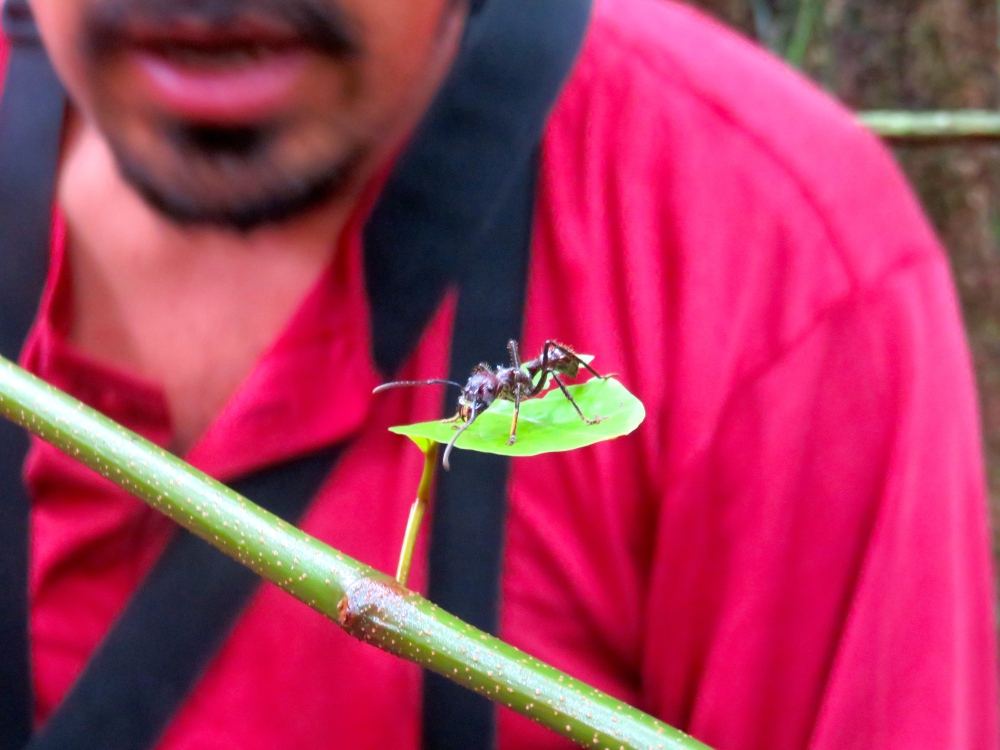
The bullet ant; it uses its large jaws to clamp down on the victim and uses its stinger to inject its potent toxin.
The Amazon is full of many things that can potentially harm you, but I managed to escape relatively unscathed besides the dozens of mosquito bites and a couple scratches from several razor-edged plants. The large, 4-5m long black Caimans we saw the first day left us alone during our boat ride around Limoncocha lagoon. These giant reptiles have been known to attack unsuspecting tourists swimming in the lagoon at night, so whenever we went for a swim in the river it had to be in a low occupancy area during the day. Luckily, we were with our wonderful guides, Mauro & Hector, who were usually helping to keep us safe when they weren’t busy pointing out various birds.
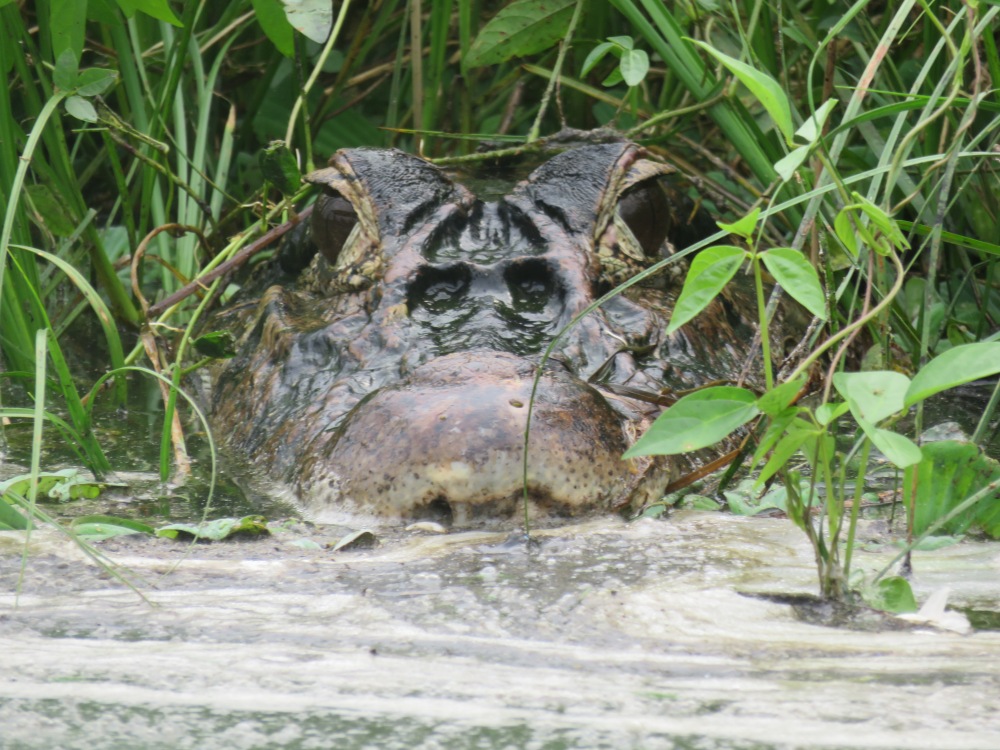
A 4m-long black caiman keeping a careful eye on us
When you’re not busy being bitten by mosquitoes or stung by other things, it is very easy to appreciate the beauty of this part of the Amazon. Since the Ecuadorian Amazon is the most biodiverse region in the world, there are amazing animals around every corner. A simple canoe ride through the river offers fantastic views of rare and beautiful birds. Walking back to the lodge to relax on a hammock, a troop of squirrel monkeys passes by to forage for food. We had many opportunities to examine this high biodiversity through field exercises. Most mornings, we would search for birds at various sites around Limoncocha or in canoes around the Napo River at Pañacocha. The best place for birding was at a salt lick along the Napo River, where we stopped in the early morning to see huge flocks of parrots acquiring salt from the cliff rocks. It was amazing seeing so many parrots, toucans, and other birds along the river.
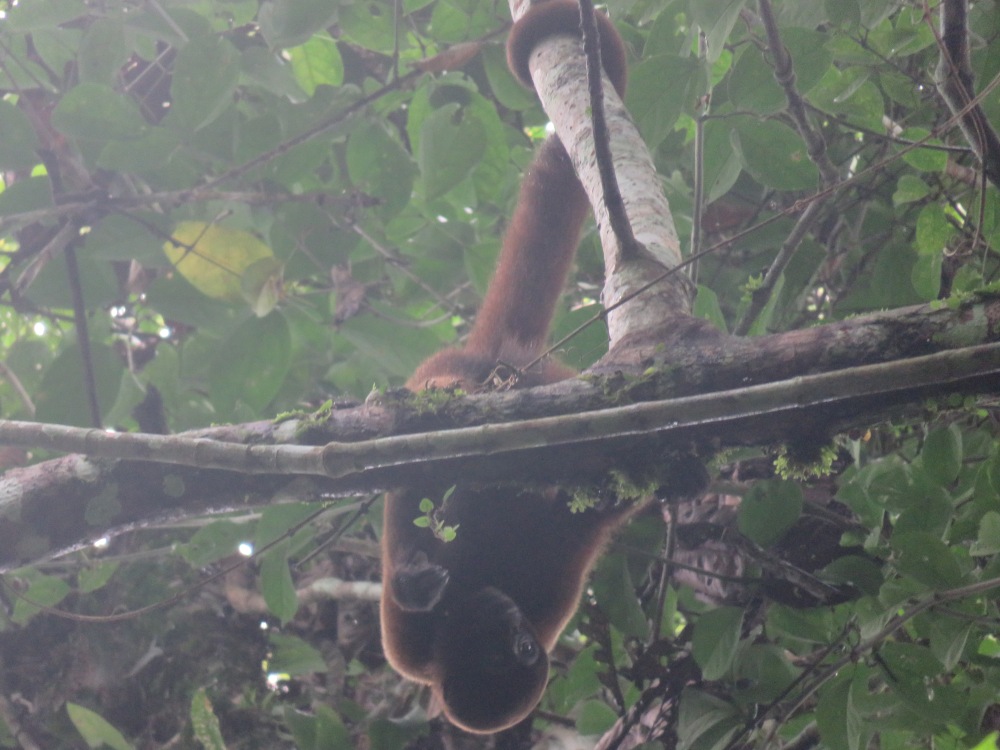
A wooly monkey just hanging around
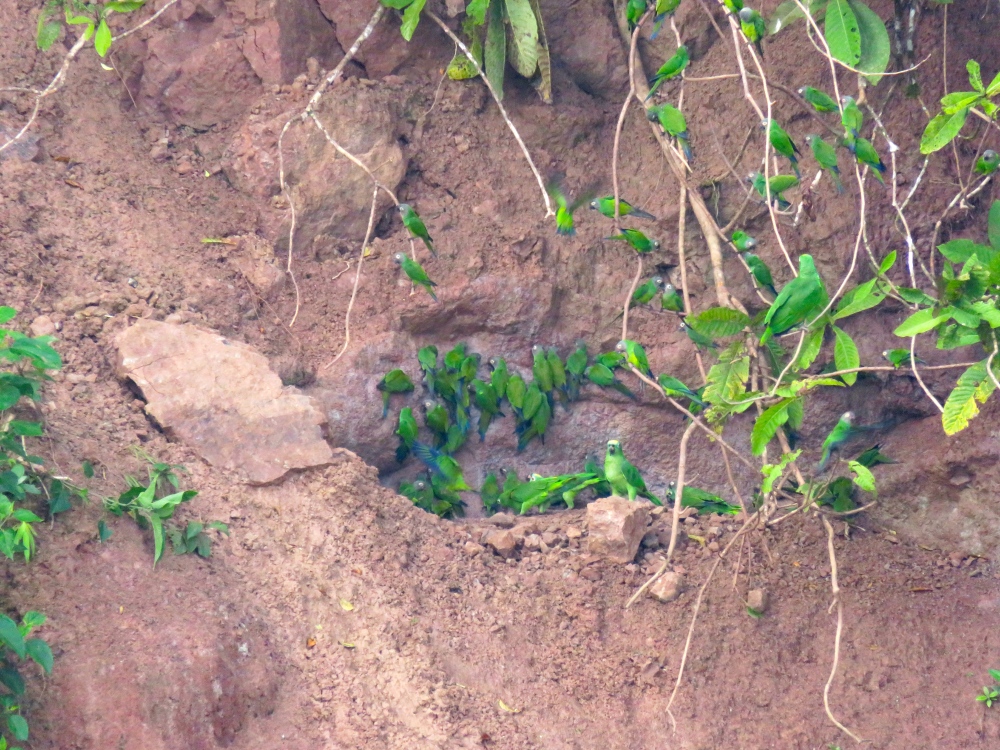
Dozens of parrots on the salt licks
We took an excursion to Monkey Island, a rehabilitation center for wooly monkeys, squirrel monkeys, and many others. It was great seeing these monkeys up close, but we also saw groups of Dusky Titi Monkeys and a pygmy marmoset close to our lodges.
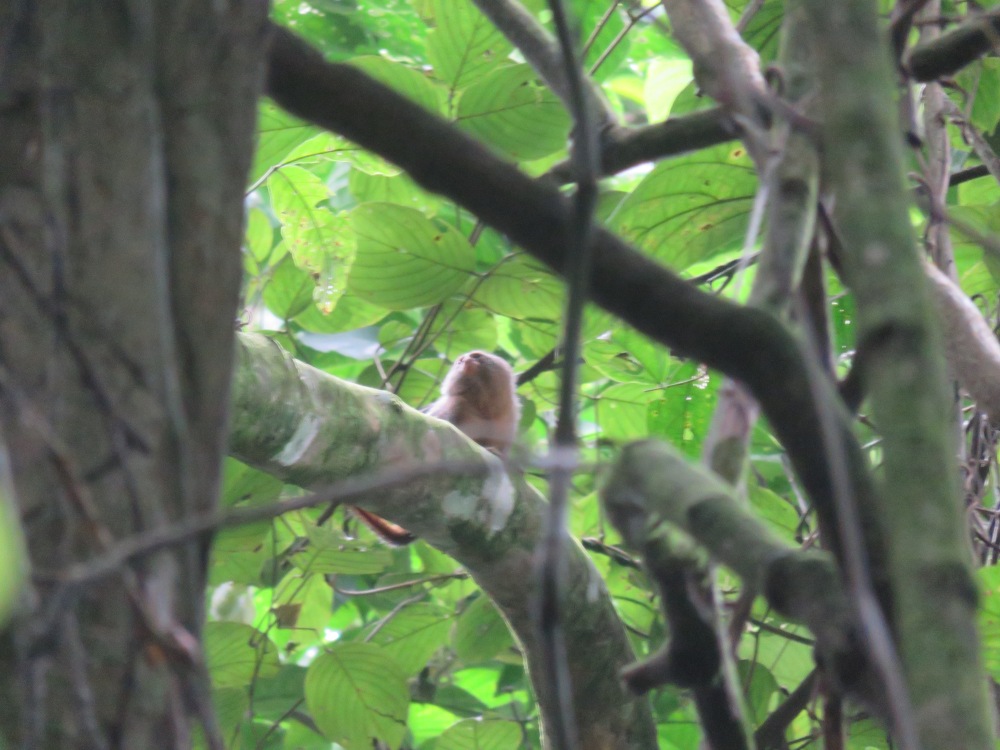
A pygmy marmoset, the world’s smallest monkey! I had the pleasure of studying them at the Perth Zoo for my independent study project in Australia. Seeing them in the wild was much more gratifying!
The diversity of the amazon is best represented by the insects, which we analyzed in a short activity capturing bugs near the lagoon. It is amazing how many cool insects there are! We also took hikes around the forest, identifying important plant families and learning about forestry. One of my favorite hikes was at night, when we saw a number of nocturnal insects, frogs, and owl monkeys, which are the only nocturnal monkeys. Also at night, we set up mist-nets like we did in the cloud forest, but this time we captured and measured leaf-nosed bats! I did not realize how complicated bats were, and they were actually kinda cute up close (in an ugly sort of way).

A pink glasswing butterfly, an example of the incredible diversity of insects in the Amazon

Kinda cute, right?
But it’s not just biodiversity; on the way to the amazon, we stopped by a sedimentary cave to explore the fascinating geology of the area. Lots of shells were fossilized in the walls of the cave on shelves, which I grabbed onto a lot of the time to keep myself from falling. Though the water was cold and at some points waist-high, exploring the cave was a great start to the amazon excursion.
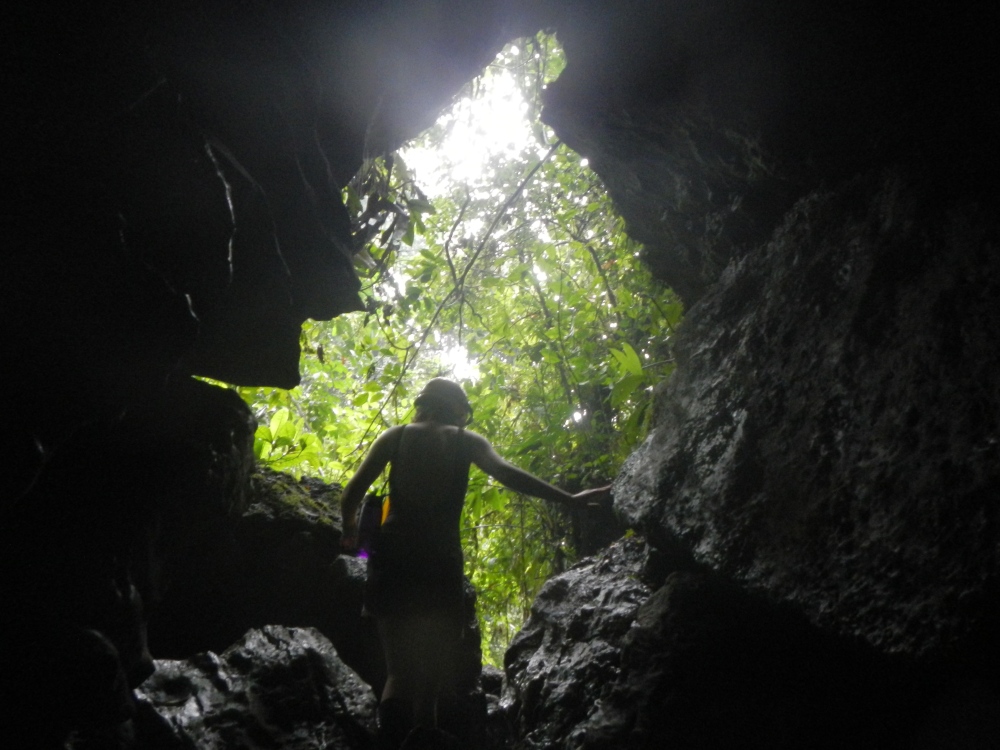
My friend Marie climbing out of the cave
We also stopped by several petroleum fields, learning about how the oil industry is destroying the Amazon by deforesting areas for roads and equipment. When the excess gas is burned, thousands of insects are killed as they are attracted to the light of the flame at night. The toxins from the crude oil also leak into the surrounding area, contaminating the land and water supply and endangering the health of all the native communities of the amazon.
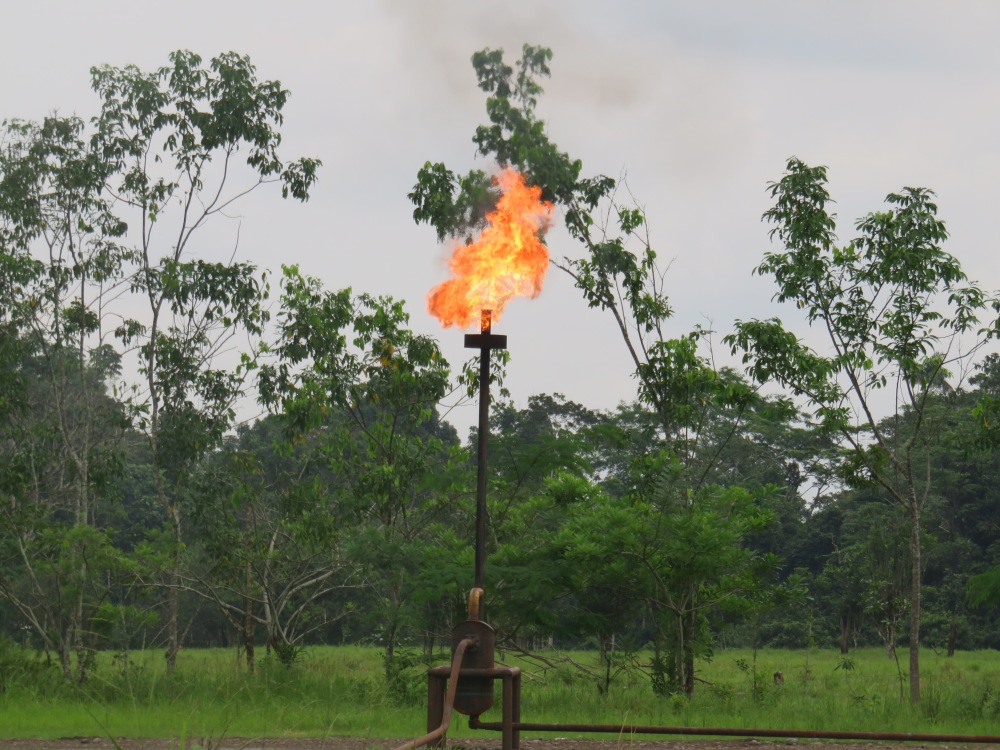
The flames from burning off excess gas
The biodiversity of the Amazon is breathtaking, but it is unfortunately threatened by deforestation and the petroleum industry. It is important to conserve this remarkable area of the world that I have been so lucky to experience, and learning about the issues faced by the Amazon is only the beginning.